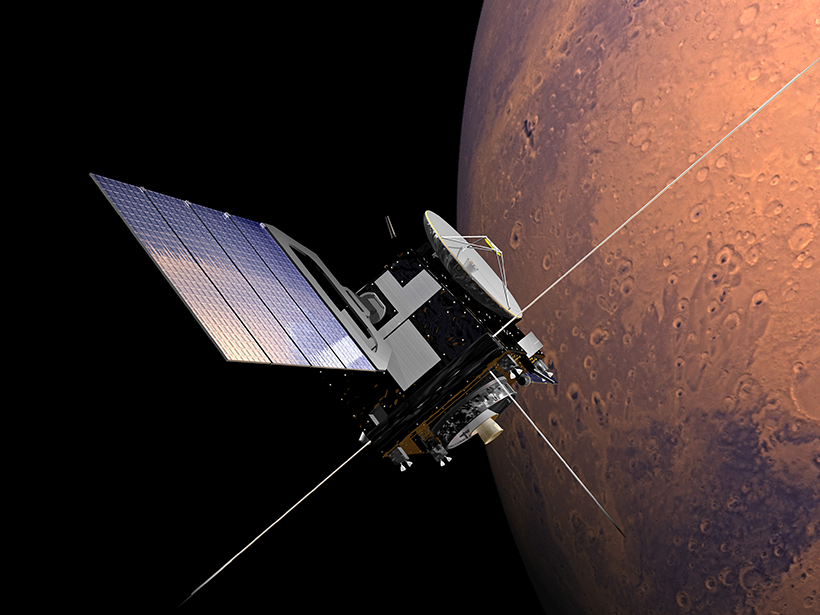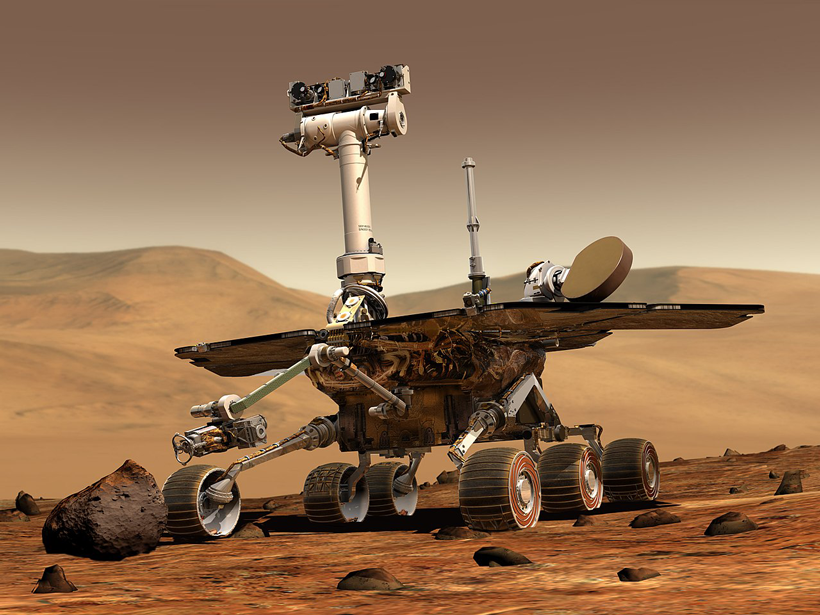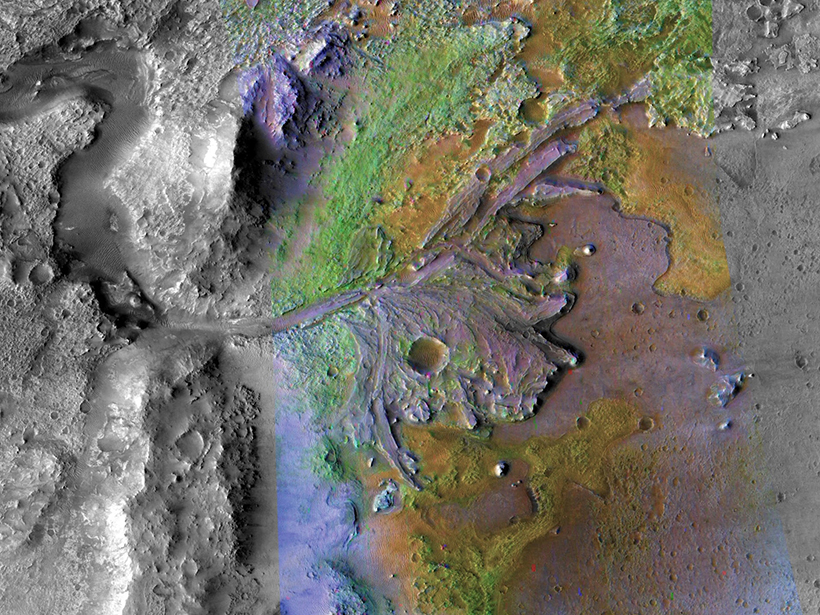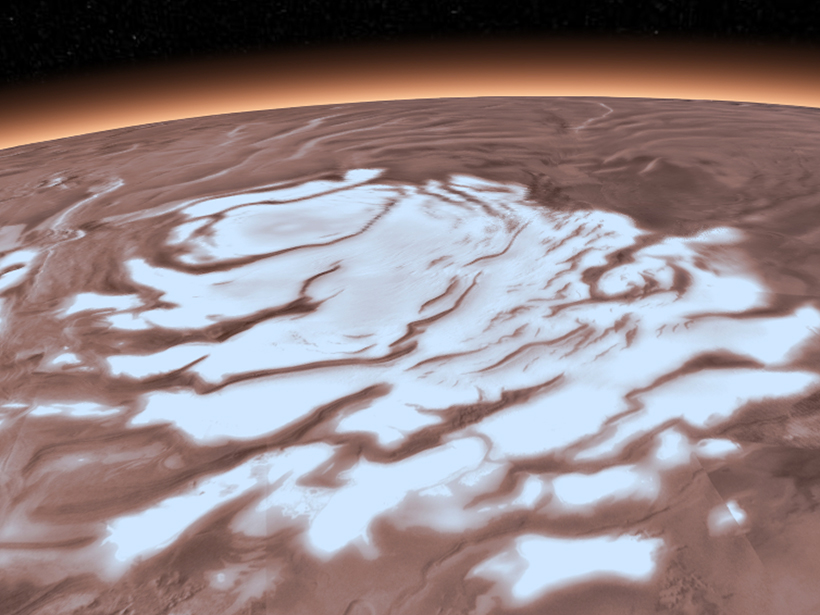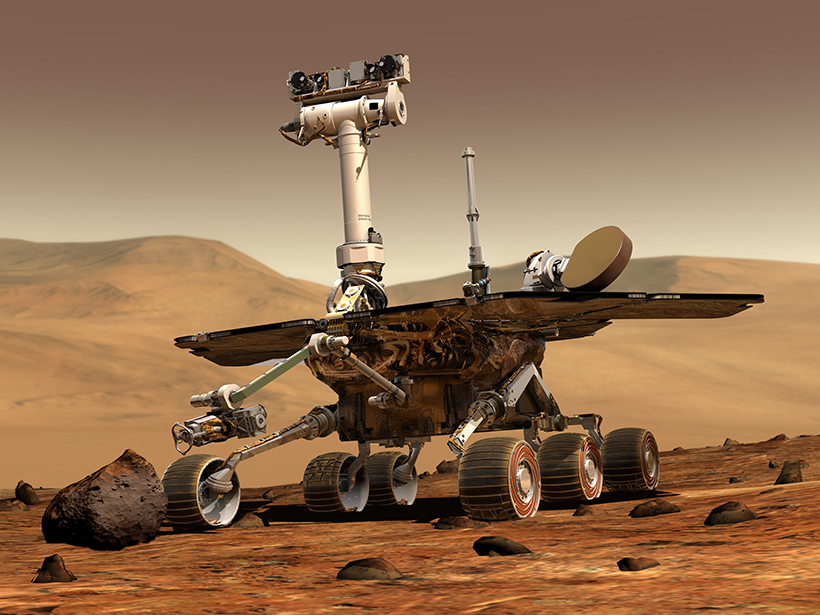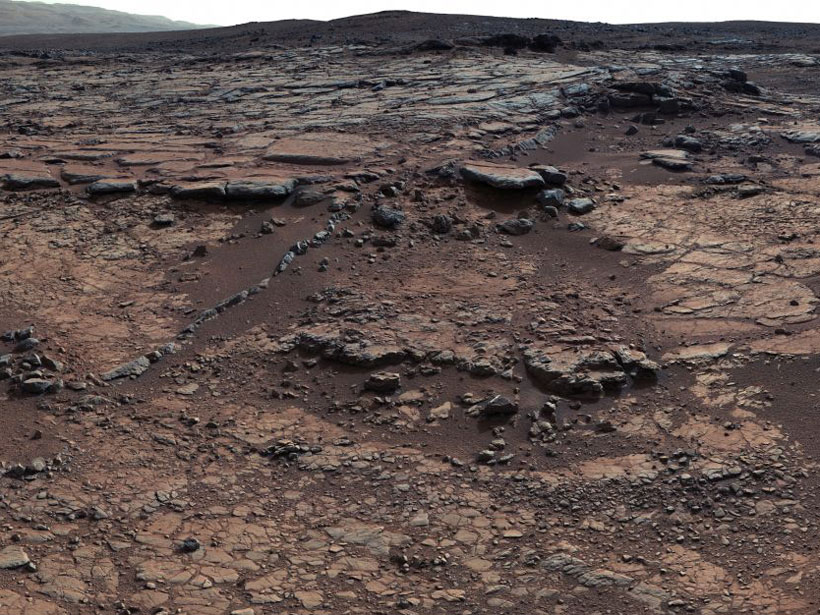Sediments from the Curiosity rover and experiments using tanks of gas and laser beams helped reveal how water continued to flow on Mars after the planet lost its atmospheric carbon dioxide.
Mars
The Accidental Particle Accelerator Orbiting Mars
The radar aboard the Mars Express spacecraft can generate ion beams arcing through space above the planet, which could lead to a new way of studying the plasma surrounding it.
Rest in Peace, Spirit and Opportunity
A scientist on the rover team offers a remembrance of two intrepid explorers.
What Ancient Rivers on Mars Reveal About Its “Great Drying”
Dried-up rivers on Mars suggest that the planet was wet in the not-too-distant past.
Local Heat Source Needed to Form Liquid Water Lake on Mars
Thermal modeling suggests that active magmatism in the past few hundred thousand years could account for the presence of a large lake previously hypothesized beneath the Red Planet’s southern ice cap.
Opportunity Rover Mission Complete
The rover explored Mars’s surface for nearly 15 years and discovered ample evidence of the planet’s wet history.
New Hints About How Martian Moons Formed
A new study finds that Phobos includes chunks of Martian crust.
Future Mars Rover Named for DNA Pioneer Rosalind Franklin
The rover will explore a once water rich region on Mars’s surface and search for evidence of current and past life.
Researchers Bring Early Martian Water Chemistry to Life
Lab experiments constrain conditions necessary for a key mineral to have formed in ancient lagoons and a crater lake.
Thermal Signature of Martian River Deposits Suggests Cementation
Are there indications of extended aqueous processes beyond the period of widespread fluvial activity on Mars?


